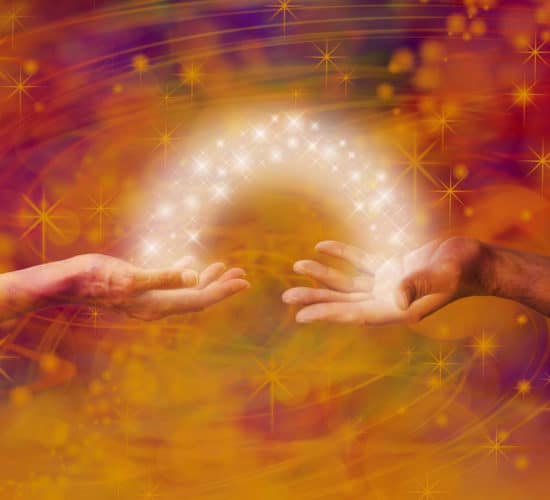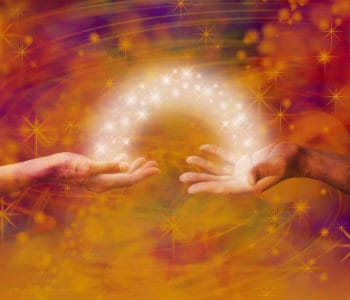Shamanism is an ancient system of belief that originates from the ‘first nation’ people, the indigenous people of the world. For example, the Inuit, the Native American Indians, Siberians, Australian Aborigines, and the Quechan people of Peru all carried out shamanic practices.
What is interesting about shamanic healing and shamanism is that even though these peoples were spread far and wide across the globe – with no means of communication – the belief systems and healing practices were all very similar!
A few of the common beliefs across different lineages of shamanism are as follows:
- The shaman acts as an intermediary between this world and the spirit world.
- The shaman will have gone through a severe training process over many years and normally will have endured severe illness, or a death or near death experience. This is so the shaman understands illness, understands suffering and can therefore relate to his patient and not fear death.
- The shaman enters into trance states through various techniques (dancing, drumming, singing or rattling) in order to journey to other realms and obtain information and knowledge for his or her client.
- The shaman is able to leave his or her physical body in order to carry out healing in other realms.
- The shaman uses his or her own spirit guides which are native to his or her location, (so the Quechuan shaman work with mountain spirits as they live in the High Andes, the Reindeer Shaman of Mongolia work with the spirits of yes, you guessed it, reindeer and so on).
- In order to assist his patient, the shaman uses various methods of divination for example I use two different types of tarot cards, I dowse using a pendulum, throw stones and use psychic viewing and psychic information to provide me guidance on what a patient needs in a session to bring about the healed state.
- The shaman often has psychic or other abilities such as clairvoyance (seeing spirit) clairaudience (hearing spirit) or clairsentience (feeling in his or her body what the patient is feeling – this is how I work).
- Shamanic healing is non-local, i.e. the person does not have to be present in order for it to work because the actual healing takes place in another dimension.
- The shaman normally works between three worlds, this world, the lower world and the upper world (which the Australian Aborigines call ‘the Dreamtime’). It is to be noted that the lower world is not a dark place but just another world which represents the subconscious.
- The shaman understands that there are many, many roots of illness. For example this could be damage to the energy field, issues with an ancestor or a trapped or unhappy spirit, a past life, power loss, soul loss, energy loss, unhappy land where the person is living, energy blockages or lack of connection to the Earth – effectively there are many reasons why we get ill and the shaman’s job is to get to the very root of the issue and clear it completely.
- The shaman is also highly respectful of the natural world and takes care to remain in harmony with it. For example, we believe that everything natural – a rock, a tree, a jaguar, or a stream – has a spirit, an aspect of Divinity with it and a consciousness that can be communicated with and from which useful information can be gained. Recognizing this, Plato wrote (in Phaedrus) that ‘the first prophecies were the words of an oak.’I remember hearing a wonderful story about one of my guides, a shaman who lived in a tiny hut above the cloudline in the high Andes, Peru. He was taken to St Patrick’s Cathedral in New York City to take part in a special ceremony there one evening. Earlier in the day, he was taken by taxi with a group of people to a restaurant for lunch. Then he went missing. Everyone panicked thinking he would be lost and miss the ceremony. They searched long and hard for him. But he was found later on in his hotel! When asked how he found his way back to the hotel he said, ‘I spoke to the trees and they guided me.’ Isn’t that marvelous? I have worked with other shaman in Peru and observed that if they pick a flower, perhaps to make some medicine with, they will leave a small offering to the plant as a thank you. So shaman are very careful to live in harmony with nature and look after what we believe is our true Mother – Mother Earth. We have a saying… that we should live ‘without leaving footprints in the snow.’
Shamanism is not a religion in itself but a system of belief; therefore it is suitable for all.
Modern medicine, herbal medicine and psychology also have their roots in shamanism. Shamanism and shamanic healing is built around a central figure in the community – the shaman (pronounced SHAH-man). The word shaman is said to originate from the Tungusic Evenki language in Siberia and is said to mean, ‘one who sees in the dark,’ or, ‘one who knows.’ In Aboriginal culture, the shaman is known as the ‘clever man.’








